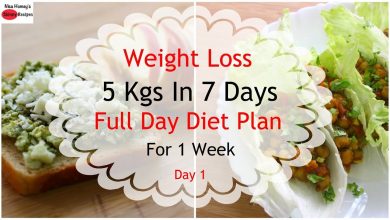weight loss foods Dishes:
It’s critical to develop meals that are high in nutrients and low in calories when focused on weight loss in order to assist your weight loss objectives. Here are some low-calorie, healthful recipes that will help you lose weight:
Salad with grilled chicken:
Slices of grilled chicken breast served with cherry tomatoes, cucumbers, and a mild vinaigrette dressing over a bed of mixed greens. To reduce the calories in the dressing, keep the serving size under control.
Stir-Fry with vegetables:
Tofu or shrimp should be stir-fried with a variety of colorful vegetables (such as bell peppers, broccoli, and snap peas) in a modest amount of low-sodium soy sauce or another low-calorie stir-fry sauce. For a lower calorie version of ordinary rice, serve over cauliflower rice.
Noodles with tomato sauce and zucchini:
Make “noodles” out of spiralized zucchini and serve them with a homemade tomato sauce made with basil, garlic, and fresh tomatoes. For flavor, top with a little grated parmesan.
Platter of Grilled Vegetables:
Grill a range of veggies, including asparagus, bell peppers, eggplant, and zucchini. Add some herbs and a light sprinkle of olive oil. Serve with a fried fish or cooked chicken side dish.
Pizza with vegetables and a cauliflower crust:
Use cauliflower as the base for your pizza and cover it with a light tomato sauce, a variety of colorful vegetables, and a dash of low-fat cheese.
Bell Peppers Stuffed with Quinoa and Turkey:
quinoa, veggies, and lean ground turkey filled inside of bell peppers. Bake till soft for a delicious and
Foil packets of asparagus and salmon:
Put some asparagus stalks and a piece of salmon in a foil packet, add some lemon juice, and bake. Serve alongside a mixed green salad or steamed broccoli.
Egg white-based spinach and mushroom omelette:
Utilizing egg whites, make an omelette and add sautéed spinach, mushrooms, and low-fat cheese to it.

Chicken and Cabbage Stir-Fry:
Use little oil to stir-fry shredded cabbage with lean chicken breast and your preferred vegetables. Spices and low-sodium soy sauce can be used to season food.
Soup with lentils and vegetables:
Use lentils, a variety of vegetables, and vegetable stock to make a substantial soup. It has little calories and is filling.
In order to reduce weight, keep in mind that portion management is essential. Additionally, you can help yourself lose weight by increasing the variety of fruits, vegetables, lean meats, and whole grains in your diet while minimizing the intake of processed and high-calorie items. Always consult a certified nutritionist or a member of the medical community before making any significant dietary adjustments.
Advantages and Disadvantages:
Depending on a number of variables, such as the overall dietary context, specific health issues, and lifestyle, weight loss foods, or dishes especially created to aid in weight loss, can have both benefits and drawbacks.
Advantages:
Calorie Management: Portion management and calorie moderation are frequently emphasized in weight loss meals, making it simpler for people to adhere to their daily calorie budgets, a crucial component of weight loss.
Density of Nutrients: Typically, these foods have nutrient-dense components like veggies, lean proteins, and whole grains to make sure you obtain the important vitamins, minerals, and other nutrients required for good health.
a lot of fiber: High-fiber meals are frequently used in recipes for those trying to lose weight because they help with digestion, encourage satiety, and curb hunger.
Equilibrated Macronutrients: In order to maintain blood sugar levels and support sustained energy throughout the day, well-designed weight loss dishes typically have a balance of protein, healthy fats, and complex carbohydrates.
Encourages Good Eating Patterns: Dishes for weight loss promote the intake of healthful meals, encouraging a move to a healthier diet and long-term lifestyle adjustments.
Better Metabolic Health: A better metabolism can be supported by several foods for weight reduction, which will eventually result in better fat burning and weight management.

Disadvantages:
Possibly Missing Nutrients: Some diets may restrict particular food groups depending on the weight loss strategy, which could result in nutrient shortages if not carefully managed or supplemented.
Environmental Challenges: Due to limited food options or a lack of diversity, some weight loss foods or diets may be challenging to maintain over the long term, possibly resulting in boredom and cravings.
Social Restraints: Restricted diets for weight loss may discourage social connection, making it difficult to eat out or share meals with loved ones.
Possibility of lack of enjoyment: People might not find these recipes appetizing or gratifying if the primary goal is weight loss rather than enjoyment, which could have an influence on adherence to the diet.
Not Designed for Each Individual’s Needs: Dishes for weight loss may not be tailored to a person’s unique health issues, dietary preferences, or allergies, which could hinder attaining the best outcomes.

In conclusion, even if calorie management, nutrient density, and improved eating habits are all advantages of weight loss foods, it’s crucial to approach any weight reduction strategy with consideration of individual needs, preferences, and general wellbeing. To ensure a safe and effective weight loss strategy, consulting a qualified dietitian or other healthcare expert before making significant dietary changes is advised.




